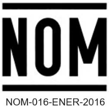EFFICIENCY REGULATIONS FOR MOTORS
Your global overview of applicable efficiency regulations and standards

European Union
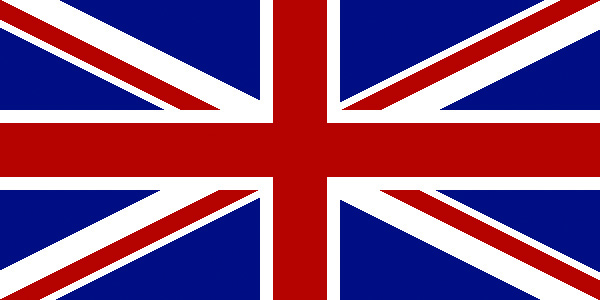
Great Britain

Eurasian Economic Union (EAEU)

Canada

United States of America

Columbia

Brazil

Mexico

Ecuador

India

Japan

Morocco

Ukraine

Turkey

Saudi Arabia

Switzerland

South Korea

People’s Republic of China

Taiwan

Singapore

Chile

Australia

Argentina

New Zealand
| European Union | |
| Efficiency standard |
|
| Efficiency regulations |
|
| Minimum efficiency |
|
| Applicable to |
|
| Exceptions |
|
| Required efficiency labelling |
|
| Future |
From 01 July 2023, the following energy efficiency classes will apply:
|
| Further information |
The update of the Ecodesign Directive 2009/125/EC is available as a recorded online seminar here (registration required). A detailed document regarding Directive (EU) 20019/1781 was prepared by CEMEP "European Committee of Manufactures of Electrical Machines and Power Electronics". The document is available here (external link). |
| Note |
Please note that standards and directives are subject to constant change. Therefore we do not guarantee the completeness, accuracy and timeliness of this data. Even though we make every endeavour to ensure that this information is correct, this overview cannot provide a substitute for a study of the relevant directives or import regulations. |
| Great Britain | |
| Efficiency standard |
|
| Efficiency regulations |
|
| Minimum efficiency |
|
| Applicable to |
|
| Exceptions |
|
| Required efficiency labelling |
|
| Future |
From 01 July 2023, the following energy efficiency classes will apply:
|
| Further information |
The update of the Ecodesign Directive 2009/125/EC is available as a recorded online seminar here (registration required). A detailed document regarding Directive (EU) 20019/1781 was prepared by CEMEP "European Committee of Manufactures of Electrical Machines and Power Electronics". The document is available here (external link). |
| Note |
Please note that standards and directives are subject to constant change. Therefore we do not guarantee the completeness, accuracy and timeliness of this data. Even though we make every endeavour to ensure that this information is correct, this overview cannot provide a substitute for a study of the relevant directives or import regulations. |
| Eurasian Economic Union (EAEU) | Armenia, Belarus, Kazakhstan, Kyrgyzstan, Russia |
| Efficiency standard |
|
| Efficiency regulations |
|
| Minimum efficiency |
|
| Applicable to |
|
| Exceptions |
|
| Required efficiency labeling |
|
| Future | IE3 from September 01st, 2024
|
| Note |
Please note that standards and directives are subject to constant change. Therefore we do not guarantee the completeness, accuracy and timeliness of this data. Even though we make every endeavour to ensure that this information is correct, this overview cannot provide a substitute for a study of the relevant directives or import regulations. |
| Canada | |
| Efficiency standard |
|
| Efficiency regulations |
|
| Minimum efficiency |
|
| Applicable to |
|
| Premium efficiency motors NEMA MG-1, Table 12 – 12 (IEC 600034-30, Class IE3) |
|
| Exceptions |
|
| Required efficiency labelling |
|
| Future |
|
| Note |
Please note that standards and directives are subject to constant change. Therefore we do not guarantee the completeness, accuracy and timeliness of this data. Even though we make every endeavour to ensure that this information is correct, this overview cannot provide a substitute for a study of the relevant directives or import regulations. |
| United States of America | |
| Efficiency standard |
|
| Efficiency regulations |
|
| Minimum efficiency |
|
|
Applicable to NEMA MG-1, Table 12 – 12 (IEC 600034-30, Class IE3) |
|
| Exceptions |
|
| Required efficiency labelling |

|
| Future |
|
| Note |
Please note that standards and directives are subject to constant change. Therefore we do not guarantee the completeness, accuracy and timeliness of this data. Even though we make every endeavour to ensure that this information is correct, this overview cannot provide a substitute for a study of the relevant directives or import regulations. |
| Columbia | |
| Efficiency standard |
|
| Efficiency regulations |
|
| Minimum efficiency |
|
| Applicable to |
|
| Exceptions |
|
| Required efficiency labelling |
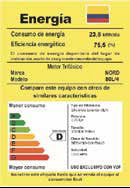 |
| Future |
|
| Note |
Please note that standards and directives are subject to constant change. Therefore we do not guarantee the completeness, accuracy and timeliness of this data. Even though we make every endeavour to ensure that this information is correct, this overview cannot provide a substitute for a study of the relevant directives or import regulations. |
| Brazil | |
| Efficiency standard |
|
| Efficiency regulations |
|
| Minimum efficiency |
|
| Applicable to |
|
| Exceptions |
|
| Required efficiency labelling |
 |
| Future |
|
| Note |
Please note that standards and directives are subject to constant change. Therefore we do not guarantee the completeness, accuracy and timeliness of this data. Even though we make every endeavour to ensure that this information is correct, this overview cannot provide a substitute for a study of the relevant directives or import regulations. |
| Mexico | |
| Efficiency standard |
|
| Efficiency regulations |
|
| Minimum efficiency |
|
| Applicable to |
|
| Exceptions |
|
| Required efficiency labelling |
|
| Future |
|
| Note |
Please note that standards and directives are subject to constant change. Therefore we do not guarantee the completeness, accuracy and timeliness of this data. Even though we make every endeavour to ensure that this information is correct, this overview cannot provide a substitute for a study of the relevant directives or import regulations. |
| Ecuador | |
| Efficiency standard |
|
| Efficiency regulations |
|
| Minimum efficiency |
|
| Applicable to |
|
| Exceptions |
|
| Required efficiency labelling |
|
| Future |
|
| Note |
Please note that standards and directives are subject to constant change. Therefore we do not guarantee the completeness, accuracy and timeliness of this data. Even though we make every endeavour to ensure that this information is correct, this overview cannot provide a substitute for a study of the relevant directives or import regulations. |
| India | |
| Efficiency standard |
|
| Efficiency regulations |
|
| Minimum efficiency |
|
| Applicable to |
|
| Exceptions |
|
| Required efficiency labelling |
|
| Future |
|
| Note |
Please note that standards and directives are subject to constant change. Therefore we do not guarantee the completeness, accuracy and timeliness of this data. Even though we make every endeavour to ensure that this information is correct, this overview cannot provide a substitute for a study of the relevant directives or import regulations. |
| Japan | |
| Efficiency standard |
|
| Efficiency regulations |
|
| Minimum efficiency |
|
| Applicable to |
|
| Exceptions |
|
| Required efficiency labelling |
|
| Future |
|
| Note |
Please note that standards and directives are subject to constant change. Therefore we do not guarantee the completeness, accuracy and timeliness of this data. Even though we make every endeavour to ensure that this information is correct, this overview cannot provide a substitute for a study of the relevant directives or import regulations. |
| Morocco | |
| Efficiency standard |
|
| Efficiency regulations |
|
| Minimum efficiency |
|
| Applicable to |
|
| No efficiency regulations are known for Morocco. However, conformity with the local guidelines for electrical products must be proven. The Moroccan Ministry of Industry, Trade, Green and Digital Economy has issued a conformity program (VOC - Verification of Conformity) as of February 1, 2020. The conformity program is binding since 20.06.2020. The conformity program implements the law 24-09 on the safety of products and services from 2015 for certain commodity tariff numbers. |
|
| Required labelling |
 |
| Note |
Please note that standards and directives are subject to constant change. Therefore we do not guarantee the completeness, accuracy and timeliness of this data. Even though we make every endeavour to ensure that this information is correct, this overview cannot provide a substitute for a study of the relevant directives or import regulations. |
| Ukraine | |
| Efficiency standard |
|
| Efficiency regulations |
|
| Minimum efficiency |
|
| Applicable to |
|
| Exceptions |
|
| Required efficiency labelling |
 |
| Future |
|
| Note |
Please note that standards and directives are subject to constant change. Therefore we do not guarantee the completeness, accuracy and timeliness of this data. Even though we make every endeavour to ensure that this information is correct, this overview cannot provide a substitute for a study of the relevant directives or import regulations. |
| Turkey | |
| Efficiency standard |
|
| Efficiency regulations |
|
| Minimum efficiency |
|
| Applicable to |
|
| Exceptions |
|
| Required efficiency labelling |
|
| Future |
From 01 July 2023, the following energy efficiency classes will apply:
|
| Further information |
The update of the Ecodesign Directive 2009/125/EC is available as a recorded online seminar here (registration required). A detailed document regarding Directive (EU) 20019/1781 was prepared by CEMEP "European Committee of Manufactures of Electrical Machines and Power Electronics". The document is available here (external link). |
| Note |
Please note that standards and directives are subject to constant change. Therefore we do not guarantee the completeness, accuracy and timeliness of this data. Even though we make every endeavour to ensure that this information is correct, this overview cannot provide a substitute for a study of the relevant directives or import regulations. |
| Saudi Arabia | |
| Efficiency standard |
|
| Efficiency regulations |
|
| Minimum efficiency |
|
| Applicable to |
|
| Exceptions |
|
| Required efficiency labelling |
|
| Future |
|
| Note |
Please note that standards and directives are subject to constant change. Therefore we do not guarantee the completeness, accuracy and timeliness of this data. Even though we make every endeavour to ensure that this information is correct, this overview cannot provide a substitute for a study of the relevant directives or import regulations. |
| Switzerland | |
| Efficiency standard |
|
| Efficiency regulations |
|
| Minimum efficiency |
|
| Applicable to |
|
| Exceptions |
|
| Required efficiency labelling |
|
| Future |
From 01 July 2023, the following energy efficiency classes will apply:
|
| Further information |
The update of the Ecodesign Directive 2009/125/EC is available as a recorded online seminar here (registration required). A detailed document regarding Directive (EU) 20019/1781 was prepared by CEMEP "European Committee of Manufactures of Electrical Machines and Power Electronics". The document is available here (external link). |
| Note |
Please note that standards and directives are subject to constant change. Therefore we do not guarantee the completeness, accuracy and timeliness of this data. Even though we make every endeavour to ensure that this information is correct, this overview cannot provide a substitute for a study of the relevant directives or import regulations. |
| South Korea | |
| Efficiency standard |
|
| Efficiency regulations |
|
| Minimum efficiency |
|
| Applicable to |
|
| Exceptions |
|
| Required efficiency labelling |
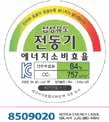 |
| Future |
|
| Note |
Please note that standards and directives are subject to constant change. Therefore we do not guarantee the completeness, accuracy and timeliness of this data. Even though we make every endeavour to ensure that this information is correct, this overview cannot provide a substitute for a study of the relevant directives or import regulations. |
| People’s Republic of China | |
| Efficiency standard |
|
| Efficiency regulations |
|
| Minimum efficiency |
|
| Applicable to |
|
| Exceptions |
|
| Required efficiency labelling |
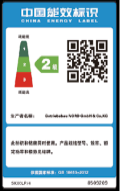
|
| Future |
|
| Note |
Please note that standards and directives are subject to constant change. Therefore we do not guarantee the completeness, accuracy and timeliness of this data. Even though we make every endeavour to ensure that this information is correct, this overview cannot provide a substitute for a study of the relevant directives or import regulations. |
| Taiwan | |
| Efficiency standard |
|
| Efficiency regulations |
|
| Minimum efficiency |
|
| Applicable to |
|
| Exceptions |
|
| Required efficiency labelling |
|
| Future |
|
| Note |
Please note that standards and directives are subject to constant change. Therefore we do not guarantee the completeness, accuracy and timeliness of this data. Even though we make every endeavour to ensure that this information is correct, this overview cannot provide a substitute for a study of the relevant directives or import regulations. |
| Singapore | |
| Efficiency standard |
|
| Effizienz-Vorschriften |
|
| Minimum efficiency |
|
| Applicable to |
|
| Exceptions |
|
| Required efficiency labelling |
|
| Future |
|
| Note |
Please note that standards and directives are subject to constant change. Therefore we do not guarantee the completeness, accuracy and timeliness of this data. Even though we make every endeavour to ensure that this information is correct, this overview cannot provide a substitute for a study of the relevant directives or import regulations. |
| Chile | |
| Efficiency standard |
|
| Efficiency regulations |
|
| Minimum efficiency |
|
| Applicable to |
|
| Exceptions |
|
| Required efficiency labelling |
|
| Future |
|
| Note |
Please note that standards and directives are subject to constant change. Therefore we do not guarantee the completeness, accuracy and timeliness of this data. Even though we make every endeavour to ensure that this information is correct, this overview cannot provide a substitute for a study of the relevant directives or import regulations. |
| Australia | |
| Efficiency standard |
|
| Efficiency regulations |
|
| Minimum efficiency |
|
| Applicable to |
|
| Exceptions |
|
| Required efficiency labelling |
|
| Future |
|
| Note |
Please note that standards and directives are subject to constant change. Therefore we do not guarantee the completeness, accuracy and timeliness of this data. Even though we make every endeavour to ensure that this information is correct, this overview cannot provide a substitute for a study of the relevant directives or import regulations. |
| Argentina | |
| Efficiency standard |
|
| Efficiency regulations |
|
| Minimum efficiency |
|
| Applicable to |
|
| Exceptions |
|
| Required efficiency labelling |
|
| Future |
|
| Note |
Please note that standards and directives are subject to constant change. Therefore we do not guarantee the completeness, accuracy and timeliness of this data. Even though we make every endeavour to ensure that this information is correct, this overview cannot provide a substitute for a study of the relevant directives or import regulations. |
| New Zealand | |
| Efficiency standard |
|
| Efficiency regulations |
|
| Minimum efficiency |
|
| Applicable to |
|
| Exceptions |
|
| Required efficiency labelling |
|
| Future |
|
| Note |
Please note that standards and directives are subject to constant change. Therefore we do not guarantee the completeness, accuracy and timeliness of this data. Even though we make every endeavour to ensure that this information is correct, this overview cannot provide a substitute for a study of the relevant directives or import regulations. |
Electric drives in industrial applications consume up to 70 % of the total energy required. For many companies, this offers
great potential for optimisation.
NORD DRIVESYSTEMS supplies a wide range of electric motors, which meet all common global efficiency regulations
and standards. Our motors are used in many applications because they are not just powerful and robust, but can also be
combined with all NORD gear units.
Whether in agitators, conveyor systems, intralogistics or the food industry: NORD electric motors can be found wherever
high performance is required. They operate reliably over many years with very high efficiency. This saves operating costs
for our customers and at the same time helps protect the environment.
